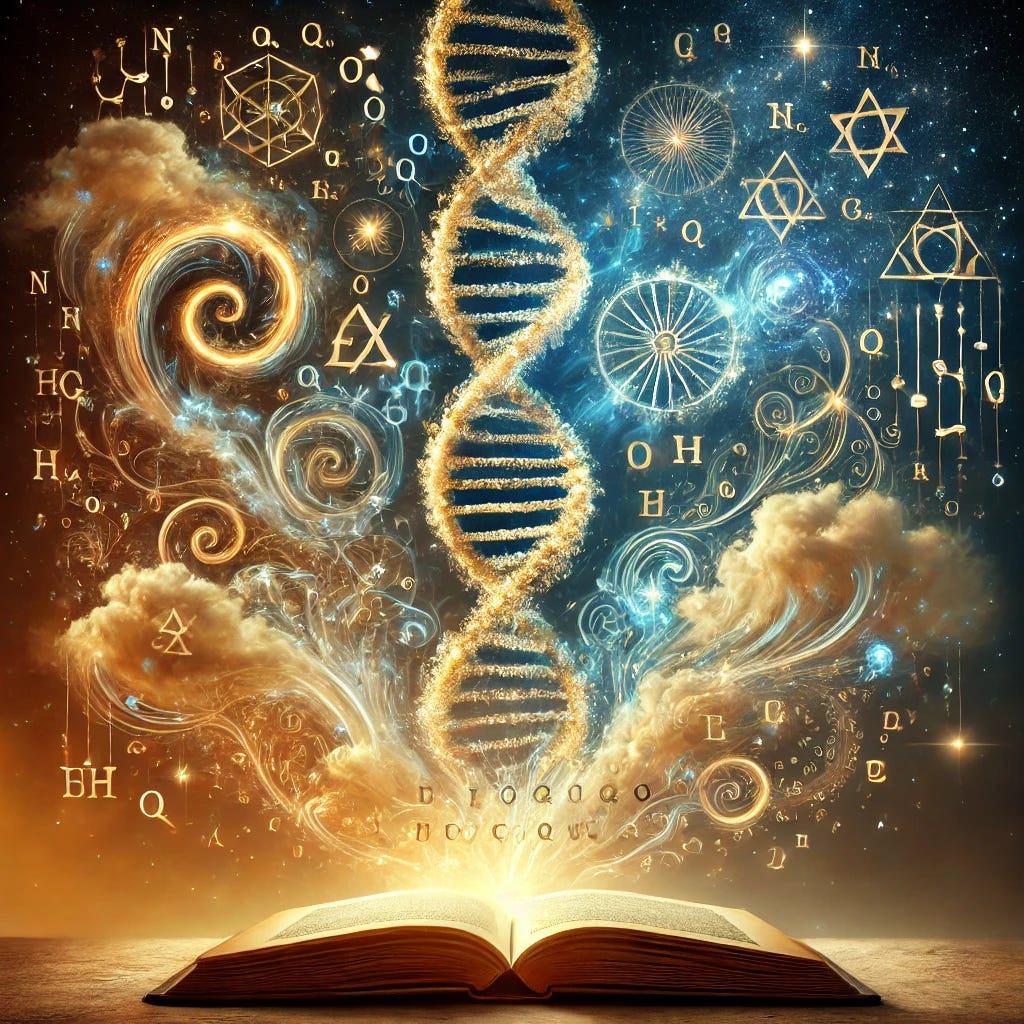Our stories are more than memories; they’re blueprints of transformation. Within every narrative we tell lies the code to who we might yet become.
The Alchemical Lens on Storytelling and Biology
At the intersection of biology and storytelling lies a transformative practice I’ll call Bio-Alchemy—a framework for exploring how narrative and biology are intertwined, each acting as a canvas for human potential. In traditional alchemy, base metals are transmuted into gold, symbolizing a journey from the ordinary to the extraordinary. Bio-Alchemy takes a similar approach but with a twist: it treats our biological potential and personal stories as “base materials” waiting to be refined and elevated. This process of transformation, both in our narratives and in our own biology, reveals hidden possibilities in what it means to be human.
Imagine if our personal narratives didn’t just define us psychologically but actively shaped our biology. What if the stories we tell ourselves, our emotional land…
Keep reading with a 7-day free trial
Subscribe to Who, what, where am I? to keep reading this post and get 7 days of free access to the full post archives.




